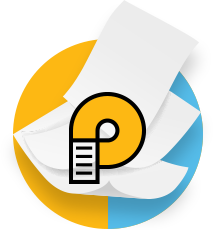The Hidden Risks of Inkjet Conversion
Companies worldwide are converting to inkjet printers and a white paper workflow. Eliminating costs associated with production, stocking, and handling pre-printed document “shells” commonly used in cut sheet print environments is a primary advantage to this transition. A color inkjet print operation needs to stock and load only blank paper, which can reduce costs and increase productivity.
Digitally imaging the form presents new document integrity challenges though. The old issue of accidentally printing on the wrong paper stock doesn’t go away. Rather, it simply gets transferred to a digital equivalent. A simple mistake of merging the wrong electronic form during document composition yields the same erroneous results.
Ironically, detecting such an error with traditional quality control methods can be tougher in inkjet environments. To improve efficiency, document operations may co-mingle documents from multiple jobs into a single print run. Visually spotting documents printed with an incorrect form overlay is more difficult when documents are merged; particularly if the document center has re-sorted the job for postal discounts. Unlike workflows based on pre-printed forms, printed pages in a white paper workflow are not sorted by application or customer and stacked on a cart waiting to be inspected.
Errors Harder to Find at Vulnerable Times
Migrating to inkjet print technology impacts many aspects of the production workflow. Document centers may need new or modified finishing equipment, software to create or transform print files into new print description languages, Customer Communication Management (CCM) software to create form overlays and merge variable data, sophisticated job and piece tracking systems, and more. Operators must be trained on new equipment or new talent brought on board. All these changes only serve to amplify the need for a close eye on product quality. There are new areas of the workflow where errors can occur.
Unless they upgrade their document integrity methods as part of the inkjet conversion, independent print service providers and in-plant print operations risk making un-catchable mistakes during and after the migration. The savings expected from an efficient white paper workflow could be erased by costly errors and reruns.
Print service providers often specialize in certain vertical markets. Many of the documents they produce are very similar – perhaps distinguishable only by logos or a return address. Under visual inspection methods, a credit union statement or doctor bill for example, might line up perfectly on a competitor’s forms. In a co-mingled printing and inserting environment even the sharpest eyes would not detect a cross-branding error. Document operations managers will discover the manual quality control procedures that served them in the past are inadequate after migrating to white paper workflows.
Associating form elements assigned to one customer with the production data of another can happen easily. Failing to update customer-specific parameters in copied code, running the wrong script, or adding data to an incorrect hot folder causes such mistakes. These errors can also occur when switching to new CCM software systems – a move many document centers may make in conjunction with their conversion to inkjet.
Imagine the problems of mismatched addresses on remittance stubs. Payments meant for one customer could actually be delivered to another before anyone discovered the error! A mistake like this would affect customer accounts and remittance processing companies. The fallout would be severe. A print service provider might easily lose the business of two customers from a single error and be accountable for damages.
In-plant print operations can encounter problems with form overlays too. Consider the ramifications when a static backer contains obsolete terms and conditions because an archived resource library was accidentally restored to the production environment. Most shops do not proof-read the legal language found on the backs of statements and bills; in the past this content was always pre-printed. It is unlikely the mistake would be noticed before distribution. Organizations can be fined or sued if company practices fail to match the printed statements.
Regulatory Infractions
Companies working with data in regulated industries such as healthcare or finance are subject to fines and penalties if errors in the white paper workflow cause private information to be revealed to unauthorized individuals. With HIPAA violations, for instance, companies can be forced to undergo audits and are required to produce extensive documentation and policy manuals. Not only are these measures expensive undertakings, they distract key company employees from their main duties which can trigger further business problems.
One aspect of a HIPAA investigation causing concern among Business Associates (BA’s), such as print/mail providers, is the prospect of being found negligent regarding prevention. If a privacy incident occurs, and the inquiry shows a BA did not have adequate processes in place to prevent breaches from occurring, the fines can be larger. This can occur even if there is no evidence anyone used the compromised information to commit a crime or harm an affected individual. The financial cost and reputation damage caused by a HIPAA action can easily exceed investments in document accuracy software that would have prevented the breach.
Inkjet printing and the advantages of a white paper workflow are very attractive. Most print operations have at least considered migrating their production to inkjet. Many have already begun this transition, which involves much more than a hardware swap. Ensuring output accuracy and integrity during a time of shifting hardware, software, personnel, and procedures should be included in everyone’s inkjet conversion project plan. Constant and consistent document quality assurance processes will allow document centers to automate their workflows with confidence and realize the benefits of their investments in new technology.




